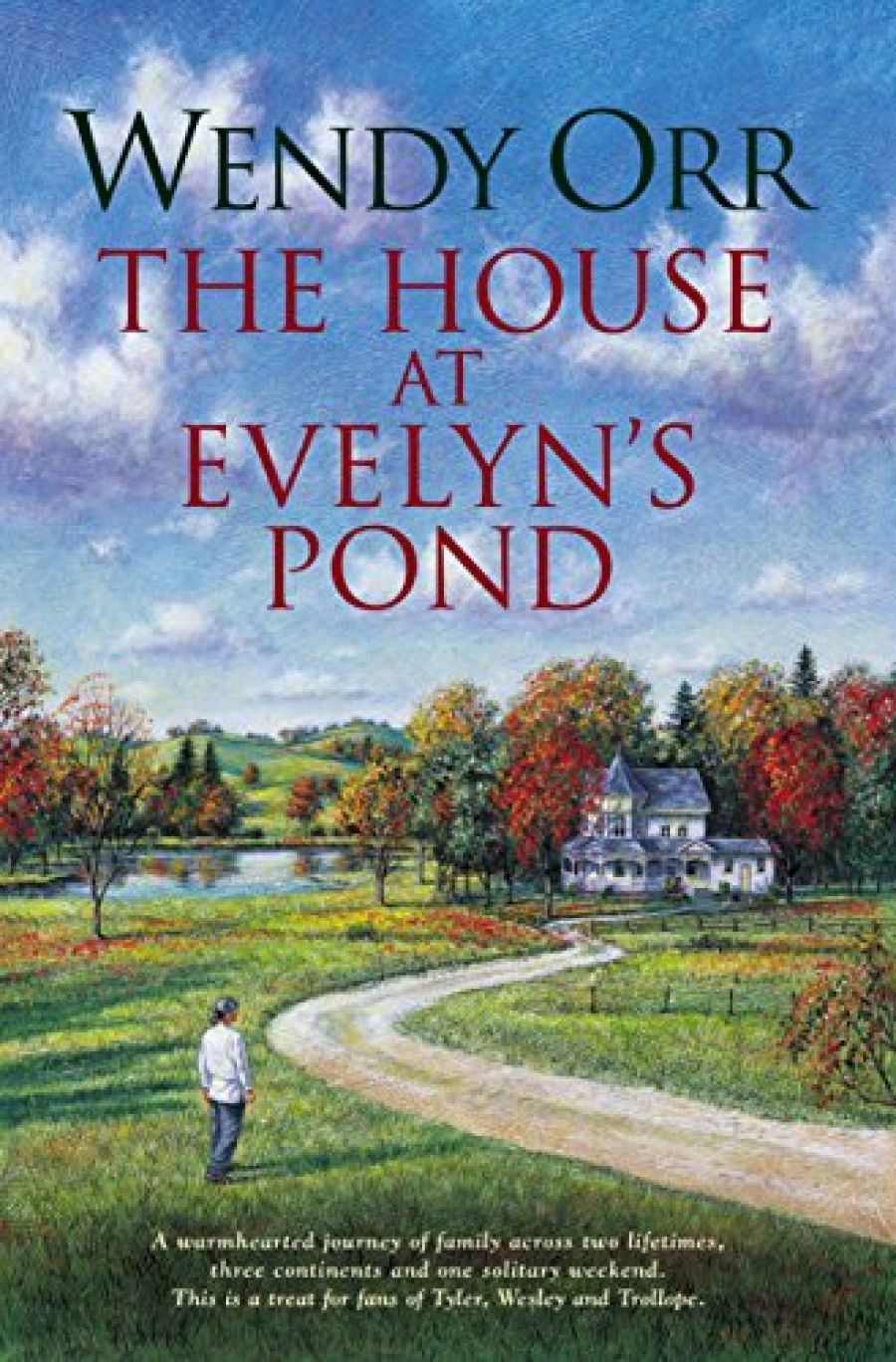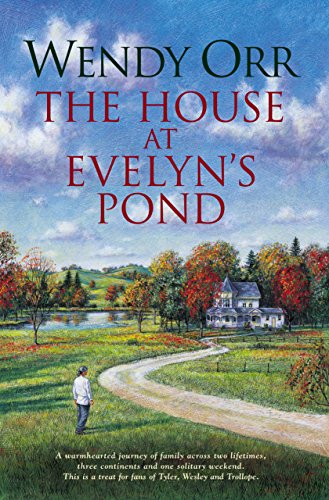
- Free Article: No
- Contents Category: Fiction
- Review Article: Yes
- Article Title: Domestic Fiction
- Online Only: No
- Custom Highlight Text:
On the front cover of Wendy Orr’s new novel, we are advised: ‘This [book] is a treat for fans of Tyler, Wesley and Trollope.’ Apart from any predisposed posed feelings you may have for the work of Anne Tyler, Mary Wesley and Joanna Trollope, this small sentence is a useful positioning statement for the potential reader.
- Book 1 Title: The House at Evelyn's Pond
- Book 1 Biblio: Allen & Unwin, $24.95 pb, 312 pp
- Book 1 Cover Small (400 x 600):

- Book 1 Cover (800 x 1200):

The House at Evelyn’s Pond is a fine addition to this formidable canon. It is indeed highly readable – the narrative moves swiftly, confidently and clearly between events, locations and characters as they shift between continents and eras. The tone of the narrator is assured, and the work is well supported by Orr’s thorough but unobtrusive research. Reading her author’s biography, I suspect much of the material in this novel is also drawn from Orr’s own life. The novel details the lives and relationships of three women, each representing a generation within a family. Warmth, sensitivity, and humour are evident throughout the novel, and Orr’s many acute observations are significantly enhanced by her ability to nail that most potent of statements, the accurate generalisation.
Wendy Orr is an experienced writer for children and young adults, but The House at Evelyn’s Pond is her first published adult novel. Her previous writings have often reflected on the search for self, the desire to belong and the impact of place, themes that Orr takes up again in this work. The novel focuses on the lives of Ruth, her daughter Jane and granddaughter Megan. Each woman undergoes a voyage of self-discovery, articulated through travel. Ruth is a pilot during World War II who emigrates to Canada as a war bride. There she begins to come to terms with her adoption as a child, reconstructing her identity via her in-laws, a task that is only completed during her final ‘blue-rinse tour’ of England.
Jane is ‘a more fortunate migrant’ than Ruth, with a ‘whole trunk full of childhood’ to take to Australia, but she is also a more hesitant character who ‘knows that her own story, sandwiched between her charismatic mother and daughter, will be one of the invisibles’. Jane’s first wide-eyed tour of Europe as a young woman, where ‘she’d gone to finish growing up but had married Ian instead’, is contrasted with her return to England at the age of fifty-two, embarking on a journey of reflection, discovery and reconciliation. Jane’s intuitive and adventurous daughter Megan enters the novel as she begins her first adult overseas holiday, moving physically and emotionally away from her family and home.
All the women in Orr’s novel are on the move. Even Jane’s ‘subservient, protected’ mother-in-law takes off on widows’ bus tours of gardens and wineries after her husband dies. It is the men who stay put, adding branches to their family trees, while the women migrate and nest amongst unfamiliar foliage.
Once the women have arrived, they set about belonging, building what Orr terms a ‘personal mythology’ in their new countries. For Ruth and Jane, this is achieved by the slow process of accepting new traditions, by developing skills that can flourish in the landscapes of their new environments – for Ruth this is bottling fruit, for Jane, planting native flora around a dam on their property – and by absorbing the stories of the area. Ruth believes that, ‘In the end we’re nothing but the stories that other people remember’, and both women gather local tales of family and place in an effort to locate themselves in their adopted countries.
For all the travel in this novel, it is a sense of home that is vital to happiness; it is, after all, the house at Evelyn’s Pond that features in the title. The house is the centre of the book and of the family. It is the place where Ruth constructs an identity, where Jane returns to realise the ‘difference between uncertainty and clarity, between duty and desire’ and Megan arrives, an emblem of ‘the blending of the past and future’. The house represents what Orr identifies through Jane as ‘the line that extends back further than we can remember, and is less of a line than a web as genes overlap with myth and memory’.
Orr’s own web of narrative, overlapping between past and present, is an engaging story, confidently told and finely crafted. The House at Evelyn’s Pond holds its own in the company of Tyler and Trollope, and presents a strong foundation for establishing Orr’s own band of loyal readers.


Comments powered by CComment